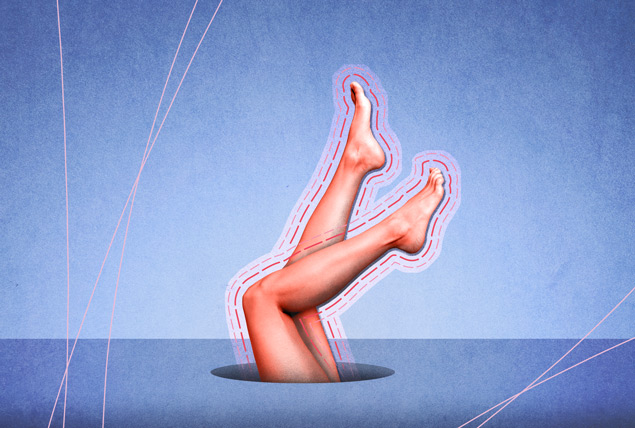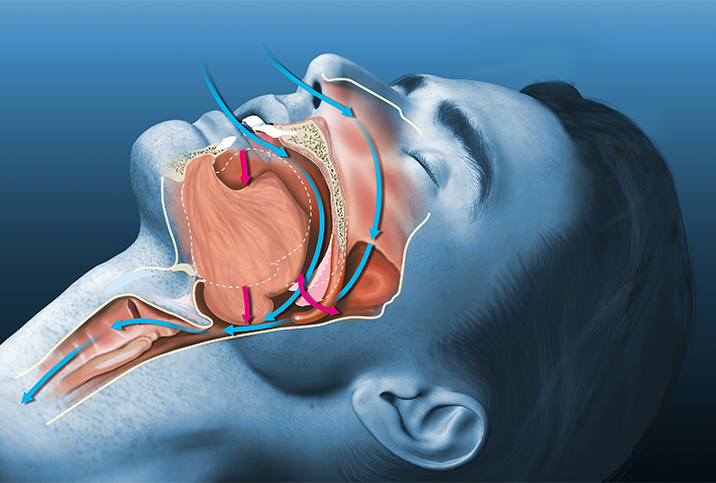Restless Legs Syndrome: The Basics

Key Points
- Restless Legs Syndrome is an overpowering sensation to move your legs while at rest. The symptoms can be really challenging to stay asleep.
- RLS can be misdiagnosed as a neurological, muscular or orthopedic condition, or just insomnia. It's even misdiagnosed as being depressed
- RLS is thought to relate to iron deficiencies in children and correlates sometimes with diabetes or kidney and neurological diseases. It can be ignored as children are often restless in school and home settings.
If you've ever felt the sudden, irresistible urge to move your legs despite being cozy in bed, you could be experiencing restless legs syndrome (RLS).
But that's not all there is to this syndrome. And it can affect more than your legs.
What is restless legs syndrome?
"RLS stands for restless legs syndrome, a neurological disorder that causes an irresistible urge to move the legs," said Robert Pagano, co-founder of Sleepline, a review website focusing on sleep products, based in Las Vegas.
The symptoms of restless leg syndrome include the following, according to Pagano:
- Aching
- Burning
- Tingling sensations
- Tugging
However, restless legs syndrome is a bit of a misnomer. The name doesn't encompass the range of symptoms someone can experience—or when.
"Those suffering from RLS usually describe the need to frequently move their legs from feelings of itching, crawling, throbbing and/or electric shocks in the legs," said Fred Pescatore, M.D., of Logical Health Alternatives, based in New York City. "Some experience increased sensations after long periods of sitting, such as working or traveling, or during the night when lying down to sleep."
"RLS can spread to the arms as well," said Daniel Atkinson, M.D., based in Manchester, United Kingdom. "These symptoms of RLS tend to be at their strongest in the evening and at night time."
Experiencing these sensations can make it difficult to get good sleep.
Are restless legs syndrome and Willis-Ekbom Disease the same thing?
"It's actually also known as Willis-Ekbom Disease, which is a neurological sleep disorder," said Marc Werner, the founder of Florida-based company Ghostbed. "It is an overpowering sensation to have to move the legs while at rest. The symptoms can be really challenging to stay asleep."
What is the difference between a disease and a syndrome? A disease is defined as a condition impairing the normal functioning of a sentient creature with set symptoms and a known cause.
Conversely, the word "syndrome" originates from the Greek word for "running together," or associated and concurrent symptoms with no defined cause.
A few similarities between the most common syndromes are a lack of a diagnostic test. No one test can diagnose a syndrome. Diagnosis is more about the symptoms and not the cause.
Hyper-focusing on the symptoms rather than the cause also might lead to over- and under-diagnosis. The majority of syndromes affect women more often.
If the "what" of RLS is that it's a neurological disorder resulting in uncontrollable movements that wreak havoc on the sleep hygiene of its sufferers and their bedmates, our next question is, "Why does it happen in the first place?"
What are the factors and triggers of RLS?
The rhyme and reason of any illness forever captivates the interests of medical professionals.
"Usually it comes down to genetics, as well as certain medical diagnoses and medications that have been seen to be key in the risk of developing RLS," Werner said. "About 10 percent have RLS but the issue is being misdiagnosed thinking it's neurological, muscular or an orthopedic condition or just insomnia. It's even misdiagnosed as being depressed."
There may also be a link between conditions and medications that could contribute to developing restless legs syndrome.
"Factors such as pregnancy and the use of certain medications can increase a person's risk," Pagano said. "However, no age group is more at risk of developing RLS than another."
Restless legs syndrome can look different when it occurs in different people. It may even start and stop—and then start back up again for no apparent reason.
"For some, symptoms may start, disappear and then come back after a long period with no symptoms," Pescatore said. "RLS is nearly twice as common in women than in men. It's a perplexing condition and we are still learning more about it. Research points to a few potential root causes, including poor microcirculation and an imbalance of dopamine in the brain, which results in sending imbalanced messages to the muscles."
Dopamine communicates between the brain and nervous system to regulate movement coordination. Damaged nerve cells or already low dopamine levels made even lower toward evening can result in uncontrollable movement.
Can children have RLS?
The short answer is yes, even kids can be diagnosed with restless legs syndrome.
"While only 10 percent [of everyone] might have this as reported, it's especially higher with women over the age of 45 and more than 2 percent of children get it as well," Werner said. "It has been determined that over 70 percent of children who seem to have the problem also have a parent with the disorder."
No one knows what causes RLS to develop in kids, but there are multiple theories. Restless legs syndrome is thought to relate to iron deficiencies in children and correlates sometimes with diabetes or kidney and neurological diseases.
Unfortunately, restless legs syndrome isn't always caught in kids. It can easily go ignored as children are often already penalized for restlessness in school and home settings.
Is RLS documented in history?
Restless legs syndrome possesses a scattered history. The condition was first described in 1685 by the British physician Sir Thomas Willis as consisting of "leapings and contractions of the arms and legs" and that patients "are no more able to sleep than if they were in a place of a greatest torture."
Finally, in 1945, the Swedish neurologist Karl-Axel Ekbom coined the term "restless-legs syndrome," after working with a cohort of eight patients. The name stuck, even if the term doesn't describe the full range of symptoms.
Does RLS affect all people equally?
Women are typically more affected by RLS than men. It seems to occur more often in individuals of European descent.
A 2011 Ecuadorian study highlighted this phenomenon by tracking RLS in two cities. One of these cities was mostly populated by descendants of European immigrants, while the other city was overwhelmingly indigenous.
The city with European heritage had a rate of 3.2 percent for RLS, while the city with a native population only had a prevalence of 0.8 percent.
However, according to the limited research conducted, RLS doesn't abide by ethnic divides so easily in America. A 2006 Baltimore-based study found African Americans and European-descended Americans had RLS at similar rates—4.7 percent for Blacks and whites held at 3.8 percent.
Internationally, the trends remain eclectic. A 2010 Turkish study interviewed 2,111 individuals along the Black Sea coast and found a prevalence of 3.2 percent in their country.
Meanwhile, a 2000 study of Japanese elders witnessed a rate of 1.06 percent. A 2010 study set in Tanzania interviewed 7,654 adults and reported the lowest rate, 0.013 percent.
How much attention is paid to RLS by the medical community?
The amount of research focusing on RLS is on the rise. Before the year 2000, one study had been published on RLS. In the first four years of the new millennium, that increased to nine articles. From 2005 to 2009, the body of information tripled to 27 articles—and 10 more articles appeared in 2010 alone.
Restless legs syndrome is one of a few chronic conditions growing in public awareness. The impacts of RLS extend to all facets of life so if you believe you may have symptoms, speak with your healthcare professional to learn more.


















